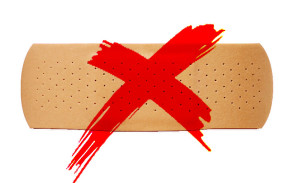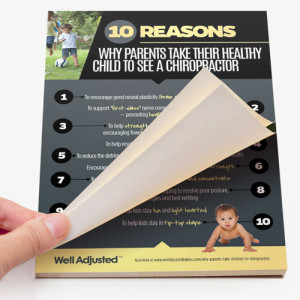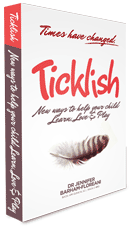 We wanted to reshare this important blog with you all.
We wanted to reshare this important blog with you all.
Some people wonder why more and more parents are taking their children to see chiropractors. The answer is simple: whether we have a large spine or a tiny little one, if that spine is negatively impacting the communication of the nervous system then our body is unable regulate and co-ordinate itself correctly…
The nervous system is the ‘Master Controller’
The nervous system is the master controller of our body and if its communication channels become fuzzy, distorted or damaged then we may experience all sorts of communication errors. For babies this ineffective communication may play out as colic or irritability, an inability to suckle and breastfeed or poor sleep habits. For a child poor nerve communication may result in developmental delays, an inability to concentrate, behavioural problems, digestive issues, asthma, headaches – the list is endless.
 While chiropractic may be able to help with a number of health issues, chiropractic is not a band-aid cure for any health challenge. Our focus is not treating or curing ailments; our focus is ensuring the nervous system has every opportunity to communicate clearly and work effectively. This enables our body to then recreate “order” and co-ordinate healing and better function.
While chiropractic may be able to help with a number of health issues, chiropractic is not a band-aid cure for any health challenge. Our focus is not treating or curing ailments; our focus is ensuring the nervous system has every opportunity to communicate clearly and work effectively. This enables our body to then recreate “order” and co-ordinate healing and better function.
Can you cook at night with the lights out?
Imagine your nervous system is like the lighting system in your home. If the lights in one part of your house start to become dim then you might not be able to finsh tasks very easily. You may have been cooking dinner and now can barely see what you are doing. You may start banging into furniture or even trip and hurt yourself. You may feel frightened. How the dimming of the lights influences you will vary but the issue remains the same – there is a communication problem between the wiring and the light globes which obviously needs to be solved and fixed.
In the same way, chiropractors spend years studying the nervous system to be able to detect and correct these ‘communication errors’ within the spine and nervous system.
Another question you may ask is…
“How do little kids get nerve irritation?”
 Nerve irritations (or vertebral subluxations) occur as a part of normal daily life. They may result from physical, chemical and emotional stressors or ‘insults’ to our health, such as bad posture, prolonged postures, sleeping on our stomachs, knocks and falls, poor food choices, dehydration, exposure to chemicals and toxins, and stress and anxiety.
Nerve irritations (or vertebral subluxations) occur as a part of normal daily life. They may result from physical, chemical and emotional stressors or ‘insults’ to our health, such as bad posture, prolonged postures, sleeping on our stomachs, knocks and falls, poor food choices, dehydration, exposure to chemicals and toxins, and stress and anxiety.
Some research suggests that even before these lifestyle stressors have an impact, nerve irritation may occur in the uterus from awkward positioning, restriction of movement in the womb and exposure to toxins. Subluxations or nerve irritation may also occur from birth complications such as long labours, very fast labours, or forceps or caesarean delivery.
Babies can be checked by chiropractors very soon after birth and special techniques have been developed to carefully correct any subluxated areas. When we appreciate how the nervous system may be hindered and impaired it makes sense why more parents are having their child’s spine and nervous system assessed.
10 reasons parents take their children to see a chiropractor:
- To encourage good neural plasticity (brain and nerve development).
- To support “first-class” nerve communication throughout the body to promoting health and wellbeing.
- To help strengthen their child’s immunity – encouraging fewer colds, ear-aches and general illness.
- To help resolve breastfeeding issues and colic.
- To reduce the detrimental impact our modern world has on our children’s health.
- Encourages children to thrive by supporting digestive strength.
- To diminish nerve interference which may impact their child’s capacity to learn and concentrate.
- To promote body balance – helping to resolve poor posture, asthma, allergies and bed-wetting..
- To help kids stay fun and light hearted.
- To help kids stay in tip-top shape.
Your child’s health is their greatest asset and yes while more research into the benefits of chiropractic for babies and children is needed, chiropractic for little people has been shown to be gentle, safe and effective.
When combined with a healthy lifestyle, chiropractic is a true wellness enabler. Ask around and you will find that parents frequently report chiropractic helps their children stay in tip-top shape.
For more information about improving your child’s nervous system function and general health, please see Well Adjusted Babies.
Resources:
Pediatric Chiropractic Anrig C, Palugher G. Lippincott, Williams and Wilkins.1998
Fallon, J.,2005. The Child patient: A Matrix for Chiropractic Care. JCCP. Suppl. 6(3)iii
Chiropractic Care for the Pediatric Patient 2nd Edition Peter N Fysh DC, ICA 2010
Forrester JA, Anrig CA. The prenatal and perinatal period. InAnrig C, Plauger G [eds], Pediatric Chiropractic. Baltimore, MD: Williams & Wilkins, 1998, pp. 152-160.
Hultman C. Autism May Result From Intra-uterine Growth Restriction, Foetal Distress. Epidem. 2002;13:417-423.
Gottlieb MS. J. Neglected Spinal Cord, Brain Stem and Musculoskeletal Injuries Stemming from Birth Trauma.
Alcantara J, Ohm J, Kunz D.The Safety and Effectiveness of Pediatric Chiropractic: A Survey of Chiropractors and Parents in a Practice-Based Research Network. Explore 2009; 5:290-295.
Vallone S, Chiropractic Evaluation and Treatment of Musculoskeletal Dysfunction in Infants Demonstrating Difficulty Breastfeeding, Journal of Clinical Chiropractic Pediatrics, 2004; 6(1):349-61
Joyce E. Miller, DC, a Laura Miller, b Ann-Kristin Sulesund, b and Andriy Yevtushenkob CONTRIBUTION OF CHIROPRACTIC THERAPY TO RESOLVING SUBOPTIMAL BREASTFEEDING: A CASE SERIES OF 114 INFANTS
Journal of Manipulative and Physiological Therapeutics. Volume 32, Number 8
Froehle RM. Ear infection: Aretrospective study examining improvement from chiropractic care and analyzing for influencing factors. Journal of Manipulative and Physiological Therapeutics1996; 19(3): 169-177.
Anderson- Peacock, E>S 1996. Chiropractic adjustments for children. Can Chiropractor 1(2),21-26
Klougant N. Nilsson N. Jacobsen J. Infantile Colic Treated by Chiropractors; a Prospective Study of 316 Cases. JMPT. 1989;12:281-288.
Jesper. et al. The Short Term Effect of Spinal Manipulation in the Treatment of Infantile Colic: A Randomized Controlled Trial with a Blinded Observer. JMPT. 1999;22;517-522.
Bronfort G. et al. Chronic Paediatric Asthma and Chiropractic Spinal Manipulation; a Prospective Clinical Series and Randomised Clinical Pilot Study. JMPT. 2000;24:69-77.
Lantz CA, Chen J. Effect of chiropractic intervention on small scoliotic curves in younger subjects: Atimeseries cohort design. Journal of Manipulative and Physiological Therapeutics2001; 24(6): 385-393.
91
Tarola GA. Manipulation for the control of back pain and curve progression in patients with skeletally mature idiopathic scoliosis: two case studies. Journal of Manipulative and Physiological Therapeutics994; 17(4): 253-257.
Hartvigsen J, Hestbaek L. Children and Chiropractic Care: A Window of Opportunity. J Manipulative Physiol Ther 2009;32:603-605.
Reed WR, Beavers S, Reddy SK, Kern G. Chiropractic management of primary nocturnal enuresis. Journal of
Manipulative and Physiological Therapeutics1994; 17(9): 596-600.
Lebouef C, Brown P, Herman A, Leembruggen K, Walton D, Crisp TC. Chiropractic care for children with nocturnal enuresis: Aprospective outcome study. Journal of Manipulative and Physiological Therapeutics1991; 14(2): 110-115.
NEW! “10 Reasons” Educational Posters, Infosheets & Postcards for Chiropractic Clinics…
TAKE A LOOK!…


 We wanted to reshare this important blog with you all.
We wanted to reshare this important blog with you all.



